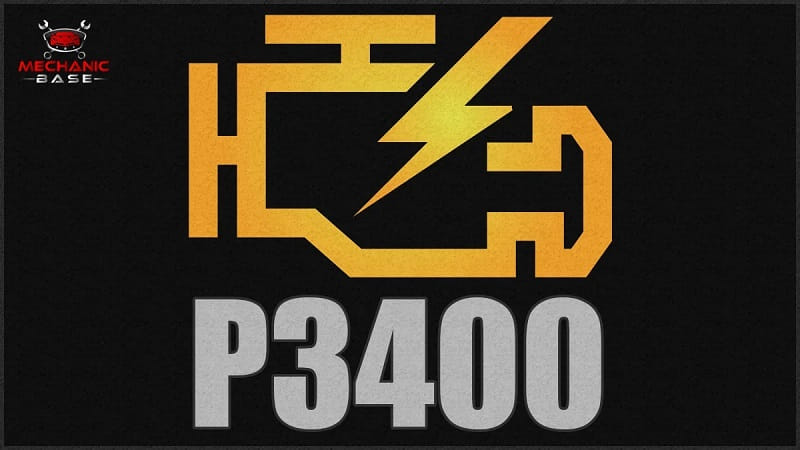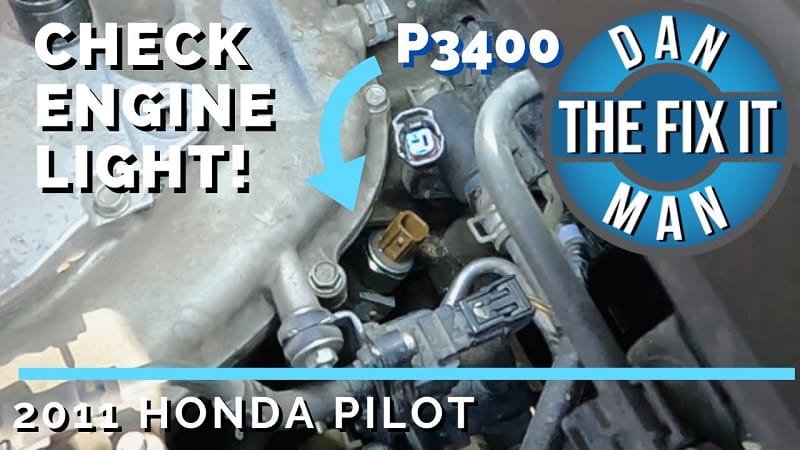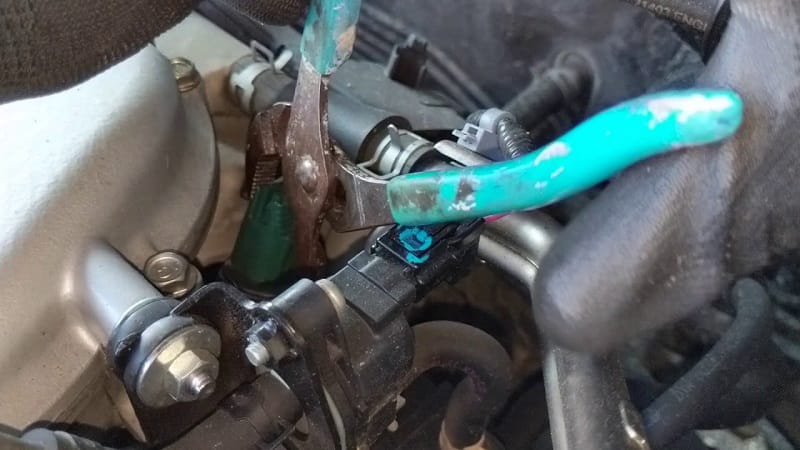This post contains affiliate links. This means I will make a commission at no extra cost to you should you click through and make a purchase [ “As an Amazon Associate, I earn from qualifying purchases.” ]. Read the full disclosure here.
Understanding P3400: Cylinder Deactivation System Bank 1 Malfunction GuideMechanic.Com Modern vehicles strive to balance performance with fuel economy and emissions control.
One technology developed to meet these goals is the cylinder deactivation system, also known as Variable Displacement or Active Fuel Management (AFM).
When this system fails, Diagnostic Trouble Code (DTC) P3400 may appear, indicating a fault within Bank 1 of the system. This article explores the P3400 code in depth, detailing its meaning, symptoms, causes, diagnostic steps, and how to fix it.
See Also: P3401 Cylinder 1 Deactivation/Intake Valve Control Circuit/Open
P3400 Cylinder Deactivation System Bank 1
What Is DTC P3400?

DTC P3400 stands for:
“Cylinder Deactivation System Bank 1 – Performance Problem”
This code is triggered when the Powertrain Control Module (PCM) or Engine Control Module (ECM) detects a malfunction in the cylinder deactivation system on Bank 1 (the side of the engine with cylinder 1).
Cylinder deactivation allows the engine to shut down specific cylinders under light load conditions (like highway cruising) to improve fuel efficiency.
When the system fails to activate or deactivate cylinders as commanded, or if there’s a problem in the oil pressure circuit, solenoids, or electrical controls, the PCM sets code P3400 and may illuminate the Check Engine Light.
P3400 Cylinder Deactivation System Bank 1
How the Cylinder Deactivation System Works
This system is typically found in V6 and V8 engines, such as those in Honda, Chevrolet, GMC, Dodge, and Chrysler vehicles.
Here’s a simplified breakdown of how it works:
- Under light engine load, the ECM disables specific cylinders by turning off the valvetrain operation (usually intake and exhaust valves).
- Special oil control solenoids redirect engine oil pressure to activate deactivation lifters, which collapse and prevent valve movement.
- The ECM adjusts fuel injection and ignition timing to suit the reduced number of active cylinders.
- This process happens seamlessly when the engine is warm, throttle is stable, and oil pressure is sufficient.
P3400 Cylinder Deactivation System Bank 1
What Does “Bank 1” Refer To?

In a V-type engine, “Bank 1” is the side of the engine that contains cylinder 1. For example:
- On a V8 engine, Bank 1 usually includes cylinders 1, 3, 5, and 7.
- On a V6 engine, Bank 1 typically includes cylinders 1, 3, and 5.
- The P3400 code means that Bank 1’s deactivation system has failed or is not functioning correctly.
Common Symptoms of P3400
When P3400 is triggered, the vehicle may exhibit the following symptoms:
- Check Engine Light illuminated
- Poor fuel economy due to failure to deactivate cylinders
- Rough idle or engine vibration
- Decreased engine performance
- Engine noise or ticking from faulty lifters
- In rare cases, engine stalling
The engine may continue running, but with reduced efficiency or drivability.
P3400 Cylinder Deactivation System Bank 1
What Causes Code P3400?
There are several reasons this DTC might be triggered:
1. Low or Dirty Engine Oil
Oil pressure is vital for activating the cylinder deactivation system. Low oil levels or dirty oil can prevent proper lifter operation.
2. Faulty Cylinder Deactivation Solenoid (Oil Control Valve)
These solenoids direct oil pressure to special lifters. If stuck or shorted, they can cause the system to fail.
3. Electrical Issues
Damaged wiring, poor connections, or corroded terminals can cause solenoids to fail to activate.
4. Malfunctioning Valve Lifter
If the lifter doesn’t collapse as intended, the system cannot deactivate the cylinder.
5. Faulty Oil Pressure Sensor
Incorrect readings may cause the PCM to assume a problem exists and trigger the DTC.
6. Engine Control Module (PCM/ECM) Issues
Rarely, a faulty PCM can misinterpret sensor data or fail to control the system correctly.
P3400 Cylinder Deactivation System Bank 1
Vehicles Commonly Affected by P3400
Here are examples of vehicles where P3400 is frequently seen:
- Honda Odyssey / Pilot / Ridgeline (with VCM engines)
- Chevrolet Silverado / Tahoe / Suburban (with AFM V8 engines)
- GMC Sierra / Yukon
- Dodge Ram (older models with cylinder deactivation)
- Chrysler 300 / Jeep Grand Cherokee
These vehicles use systems like VCM (Variable Cylinder Management) or AFM (Active Fuel Management) to deactivate cylinders.
How to Diagnose P3400
Step 1: Check for Additional DTCs
Scan for related codes like:
- P3497 (Bank 2 cylinder deactivation)
- P0522 (Low oil pressure)
- P3401–P3408 (Individual deactivation solenoid faults)
Step 2: Check Engine Oil
- Inspect oil level and condition.
- If dirty or low, replace the oil and filter with the correct viscosity.
Step 3: Inspect Wiring and Connectors
- Check the solenoid connectors and wiring near the valve covers.
- Look for signs of corrosion, damage, or loose terminals.
Step 4: Test the Cylinder Deactivation Solenoid
Use a scan tool to command the solenoid on/off and listen for clicking.
If no sound is heard, remove the solenoid and test with 12V power.
Step 5: Check Oil Pressure
Measure actual oil pressure using a mechanical gauge.
Compare it to manufacturer specs (typically 30–60 PSI at warm idle).
Step 6: Lifter Inspection (if needed)
If misfires or ticking noises are present, the valve lifters may need physical inspection, which requires removing valve covers and possibly the intake manifold.
P3400 Cylinder Deactivation System Bank 1
How to Fix P3400

Here are the most common solutions for resolving P3400:
1. Change the Engine Oil
- Replace oil and filter using the manufacturer-recommended viscosity and grade.
- Ensure the oil pressure is within spec.
2. Replace the Cylinder Deactivation Solenoid
- If the solenoid is sticking or not activating, replace it.
- These are often mounted under the valve covers or in a solenoid pack.
3. Repair Electrical Issues
- Repair or replace damaged wiring and connectors.
- Use dielectric grease to protect connectors from future corrosion.
4. Replace Faulty Lifters
If a deactivation lifter has failed mechanically, it may need replacement.
This can be labor-intensive and may involve removing cylinder heads.
5. PCM/ECM Update or Replacement
If the PCM is at fault or affected by a known issue, reprogramming or replacement may be necessary.
Preventing Future P3400 Errors
To reduce the risk of this code recurring:
- Perform regular oil changes using high-quality oil.
- Avoid extended idle time, which can stress lifters and reduce oil flow.
- Address engine warning lights early to avoid bigger issues.
- Use fuel system cleaners to keep internal components clean.
- Check for TSBs (Technical Service Bulletins) – some manufacturers have updates to address this issue.
Conclusion
DTC P3400 is a common issue in modern V6 and V8 engines equipped with cylinder deactivation systems. While it often indicates a relatively minor issue like low oil pressure or a faulty solenoid, it can also point to more serious problems with lifters or engine internals.
Prompt diagnosis and repair can restore fuel efficiency and performance while preventing long-term damage. By understanding the system and maintaining your vehicle properly, you can minimize the risk of P3400 and ensure smooth operation of the cylinder deactivation system.
- 4×4 Truck for Sale Used - October 21, 2025
- 4×4 Truck for Sale Under 20K - October 15, 2025
- 4×4 Truck for Sale QLD - October 12, 2025
